A Facebook funnel can have many different branches to help drive leads or sales.
Each funnel is unique to a brand’s business goals, products, and customers.
For example, if you’re selling SaaS services, your funnel may contain more content (blogs and how-tos) and fewer offers, whereas an online retail store may focus more on product ads and flash sales and less on content marketing.
In this article, I’m going to reveal 5 must-have funnels that every e-commerce store needs to have, period.
1. Video campaigns
In 2018 it’s no secret that video ads are the cheapest and most effective way to reach new audiences at scale.
You’ll reach up to 15x more people if you run video views or brand awareness objectives over traffic or conversion objectives.
The bulk of your Facebook ad spend will go toward reaching new audiences. Not utilizing video will compromise your entire funnel and make it very difficult to scale, and cause a high CPA.
Start with videos at the top, and segment audiences to retarget later in your funnel.
2. Abandon cart
The abandon cart funnel is usually the most profitable campaign to run when looking at return on ad spend (ROAS).
If we exclude your customers, your next warmest audience is anybody who added items to their cart but did not complete the checkout.
This audience has looked at specific products and took a very important action: adding something to their cart.
It’s estimated that only 3% of new website visitors purchase on their first visit, so having this Facebook funnel is great for acquiring new customers or getting current customers to re-order.
Create an ‘add to cart audience’ event but exclude anyone who purchased in the last few days. Then, using dynamic product ads, you can serve them products they added to their cart.
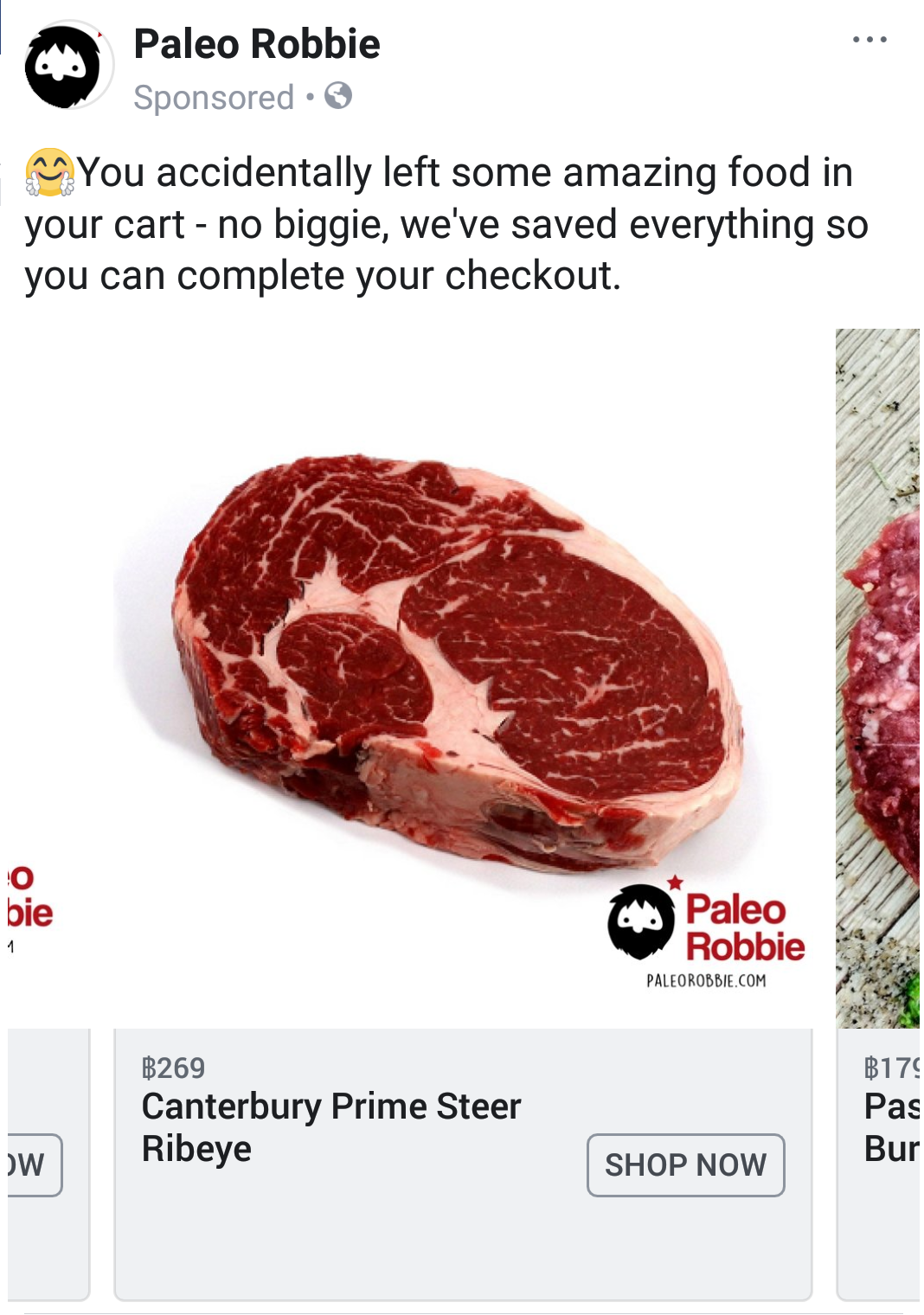
Keep an eye on your ad frequency as by using DPAs you won’t be able to optimize for reach, only conversions. For small audiences I’ve seen frequency reach as high as 11 in a short space of time.
3. Content funnels
Content funnels are something that e-commerce brands overlook, but they can play an important role if you’re selling high-ticket items, a complex product, or if you’re trying to build a super strong brand.
If your average order value is in the hundreds of dollars, or your product has a unique selling point (special material, product is durable, or using some new technology, etc.), then content funnels are a great way to educate your audience about your product/brand.
If a customer understands and believes in your product, they are more likely to order from you again and again.
Online food brand Paleo Robbie use email content to educate their audience about the difference in the quality of food they offer to competitors:
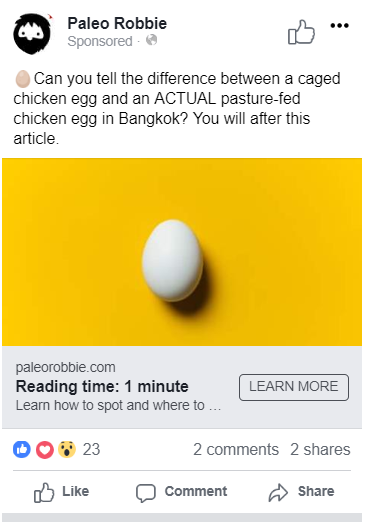
If you often receive comments on ads asking what your product does or how a certain feature works, then content funnels can help remedy that.
The profitability of a content funnel is not as easy to determine because using metrics, such as the CPA, isn’t relevant here. They tend to focus more on the longevity of a customer staying loyal to your brand.
4. Dynamic Product Ads
DPAs are to Facebook as auto-responders are to email marketing.
They allow you to set up abandon cart ads, up-sells, cross-sells, and more.
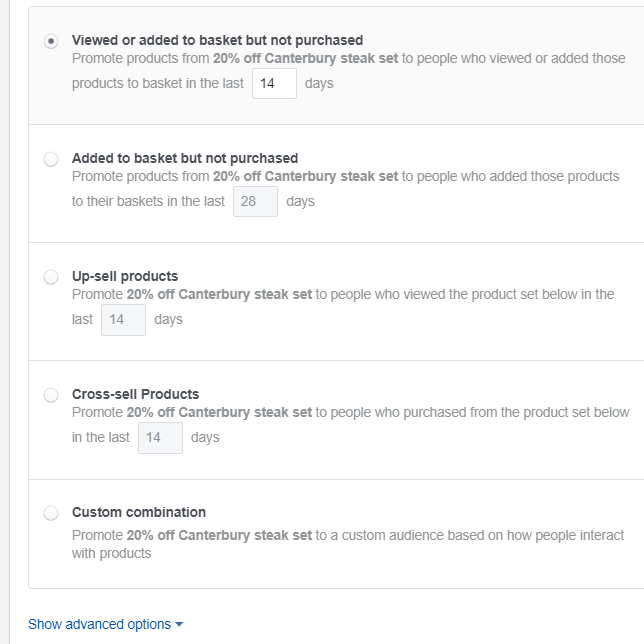
Through the creation of a product catalog, the majority of your conversion type ads should be done through DPAs.
They allow you to serve the right product ads based on a user’s website behavior without you having to guess what they want.
Syncing your product catalog with Facebook will save hours each week in setting up Facebook ads, and it will return you a much better ROAS and lower CPA than if you did it yourself.
5. Tiered offerings
A tiered offer is when you serve your audience a product on sale or discount, and the discount amount of the offer varies based on the customer’s last visit to your website.
For example, if I were to set up an abandon cart funnel, I wouldn’t create a single campaign; I’d create three which would look like this:
Campaign 1: Targeting anyone who added an item to their cart in the last 24 hours. No offer, just a direct call to action to complete their order.
Campaign 2: Targeting anyone who added an item to their cart in the last 2-4 days. The copy in this ad would contain some sort of offer or discount.
Campaign 3: Targeting anyone who added an item to their cart in the last 4-5 days. This copy would contain a stronger voucher attached with an expiry date (i.e. voucher expires tomorrow).
Another great way to use tiered offers is to first ask the prospect to pay for a high-ticket order. If that fails then a few days later you can reel them in with a lower barrier offer.
Using Paleo Robbie again, their first offer is to order 6 meals (big commitment):
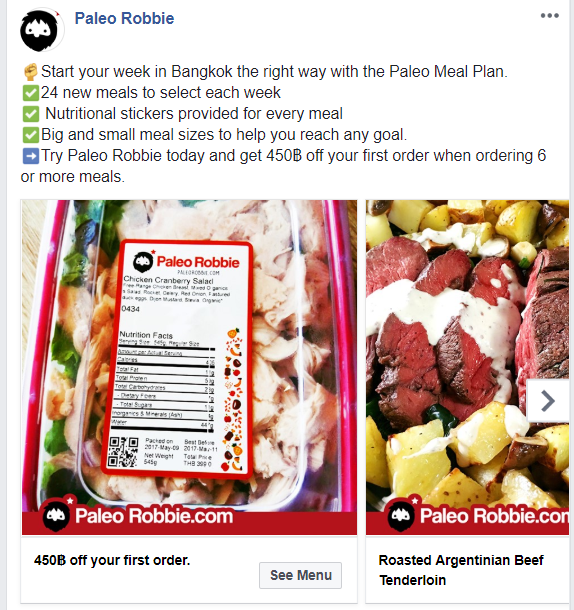
But if after 7 days the customer fails to place an order, the offer is switched to just a single meal.
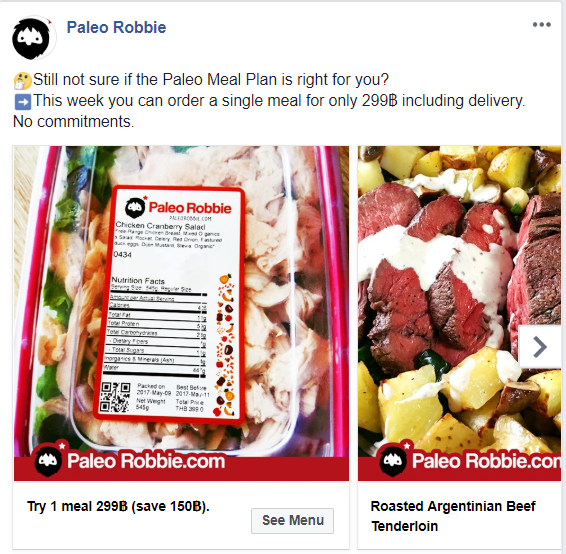
Ask yourself what barrier is stopping your audience from purchasing and tailor your tiered offers around that.
Are these funnels part of your Facebook ad strategy?
The great thing about these 5 funnels is that they are evergreen. Once they are set up, they don’t take too much time to manage and monitor.
Continually creating product ads without using DPAs is extremely time-consuming and a never-ending process.
Combining tiered offers based around user retention windows means you don’t need to fiddle around with continually creating offers all the time either. This saved time can be reinvested at the top of your funnel where most of your ad spend goes to target new audiences.